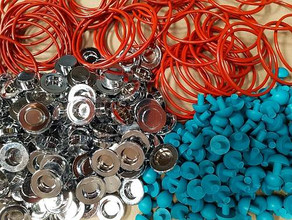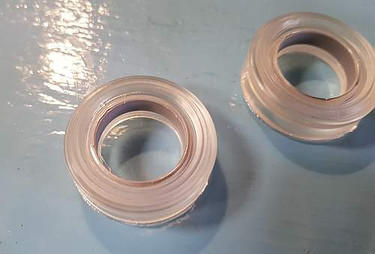EMAIL US admin@millenniumplastics.net
JOHANNESBURG
+27 (0)11 4725445
Our knowledge spans over generations, staying on trend with new technologies available in the industry
PRODUCTION
At Millennium Plastics we employ a competent and dedicated local team of 15 operators that run 12 injection moulding machines ranging from 25 to 538 Tons of clamping pressure. The hydraulic machines have a shot capacity from less than a gram up to 2.5kg.
These hydraulic injection moulding machines integrate latest technology and are designed for fast injection capability, ensuring highest part productivity, part quality and operational profitability with the lowest rejection rates. Our machines have a smaller footprint and increased energy savings using 10% - 20% less floor space.

STAGES OF
INJECTION MOULDING
Clamping
A mould consists of two halves, the fixed half and the moving half.
The process begins with the hydraulically powered clamping unit pushing the two halves together, exerting sufficient force to keep the mould securely closed while the material is injected.
Injection
The plastic injection cycle begins once the mould has closed. The raw plastic pelletized material is fed through a hopper into the barrel of the injection unit.
In the barrel the material is heated and the molten plastic is pushed forward by a hydraulic pump, forcing it through a sprue hole in the mould, via a channel (runner) and through a gate into the cavity.
The amount of material that has been injected into the mould is referred to as the shot.
Cooling
As the molten plastic makes contact with the mould surfaces, it begins to cool and solidify, taking on the shape of the mould as well as the surface texture of the cavity walls.
The mould cannot be opened until the required cooling time has elapsed.
Ejection
After an optimized injection and cooling phase, the ejection system forcefully pushes the finished part out of the mould.
The production cycle is repeated. The part size and its design as well as the polymer used, dictate the length of the moulding cycle.
Finishing
After component come out of the mould, there may be a need to trim off 'flashing', which occurs when material is forced out between mould faces.
In brand-new tools there is usually no flashing, but over time as the tool wears, after thousands of cycles, flashing occurs.
In a simple manual process this extra material is trimmed off the component. Good component design and execution into tooling accounts for this type of occurence.
Often the component is designed to accommodate the flashing in areas where it is hidden in the final assembly of the product.
Regrind
All runners and sprues left over from the trimming of a plastic part can be recycled, or disposed of in a responsible manner.
Regrinding of used material is a common practice, but can only be done with certain types of material. Some low-cost products use reground material as a means to re-use the plastic rather than create a pollution problem. Reground material can also be mixed with virgin material if the component does not need to conform to stringent engineering requirements, or does not need to be aesthetically pleasing.
For high-performance components virgin material suited to the specific application, is always used.





